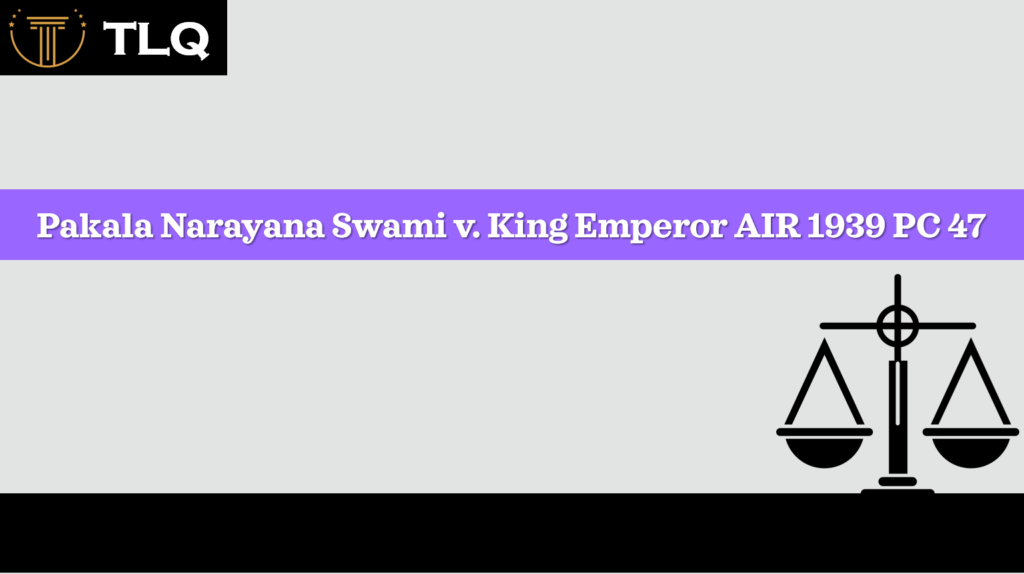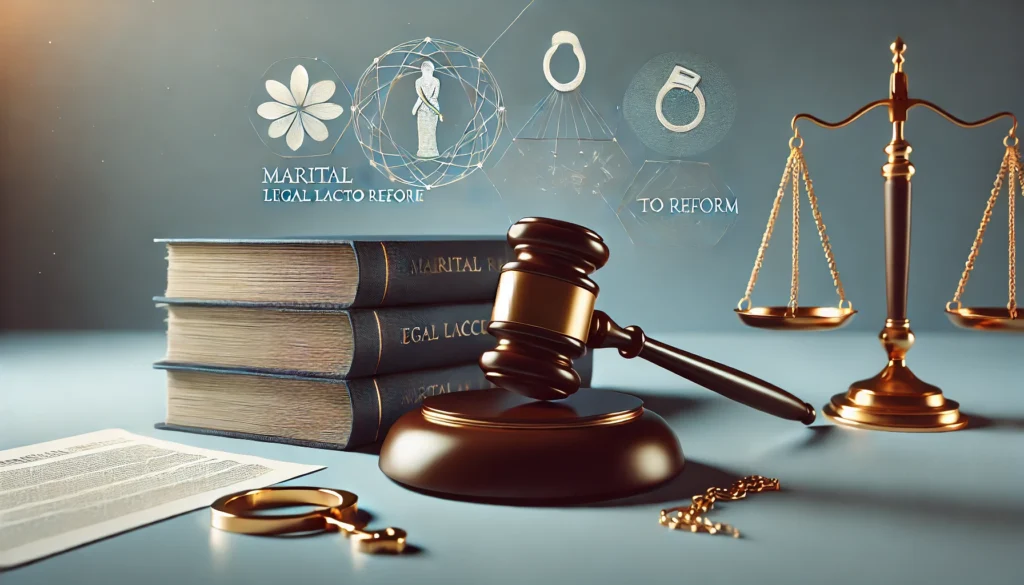Published On: 2nd September, 2024
ABSTRACT
The principle of separation of powers in government is the cornerstone of democratic governance, ensuring that power is not too centralized, and a system of checks and balances is maintained. This paper will give an all-inclusive account about the idea itself, what were its roots, and how it can be exemplified using different political systems of the world, especially in India.
The essay starts by explaining the three fundamental arms of government –the ‘legislative’, ‘executive’, and ‘judicial’ and how their separation is aimed at protecting personal freedom as well as fostering effective governance. Consequently, it traces the rise and purpose of this philosophy from its Greek and Roman antecedents to the famous exposition by Montesquieu, the French Enlightenment thinker.
Most contemporary democracies experience some level of overlap and complementarity among the branches, whereas Montesquieu’s ideal of a strict separation of powers may be considered an exception. Detailed discussion of checks and balances systems are considered using the United States and similar countries as illustrations.[1]
This document further elaborates on the special circumstances affecting India, a country that is recognized by its judiciary and is constitutionally vested with the power to separate the executive from the judiciary as one of the basic structures even though such separation is not expressly stipulated in the Constitution itself. It outlines several crucial points about this independence of the judiciary including separating it from the executive arm or branch of government; that this doctrine gives judiciary powers of judicial review as well as circumscribe its field practice while carrying out its duties such as interpreting laws among others.
In conclusion, this paper highlights how the concept of checks and balances is important for promotion of good governance even though it has challenges in contemporary governance that require enhanced crosscutting interests and room for change. The necessity of undertaking such negotiations when crafting this doctrine as a policy maker or academic cannot be overemphasized.
INTRODUCTION
The principle of separation of powers represents a core idea behind democratic rule which is meant to prevent power from being centralized too much, as well as to make sure that no one branch exercises it to the full extent. This is achieved by creating different branches that perform various purposes: they include judiciary, legislature, and executive. Consequently, this principle is intended to make sure that every branch can check or control the activities of the other branches while at the same time protecting the freedoms or rights of individuals and promoting efficient organization.
This article looks at the history, use, and value of the doctrine of separation of powers, in India’s constitutional setting. The article discusses the interpretation, applied, challenges faced, and continued significance in today’s era of complex governance.
Governments are often divided into separate branches of distinct but independent powers and roles in a system known as the Separation of Powers, where the powers in one branch do not conflict with those in other branches. Typically, there are three branches which include: –
- Legislative is responsible for passing laws.
- The executive ensures the execution and administration of laws.
- Judicial interprets and applies the law to specific cases.
The point for which government powers are separated is to prevent the centering of influence which makes possible its abuse. Separating authority across various divisions of power establishes a system of checks and balances such that each division may limit or control the others.
HISTORICAL BACKGROUND
The origin of the division of power is in old Greek and Roman political theory. In his work `Politics`, Aristotle said about the three arms of government: deliberative, executive, and judiciary. This threefold division aimed at preventing dictators from ruling by themselves and thereby maintaining equilibrium in governance arrangements. In the same way, the Roman Republic illustrated the division of powers between the Senate, Consuls, and Tribunes who had specific responsibilities and role to play hence the checks and balances system. Montesquieu a French Enlightenment, philosopher in his 1748 work “The Spirit of Laws” is most famously known for articulating the doctrine of separation of powers during modern times.[2]
Montesquieu was greatly affected by the Britain system of government which he considered was a good mechanism for controlling the abuse of political power. This is because, he pointed out that there was an arrangement in Britain where power was divided between the different arms like the executive arm, the legislature, and the judiciary, thereby ensuring no single branch becomes too dominant. Montesquieu profoundly impacted the development of contemporary democratic systems through his ideas on the separation of powers. Particularly, the framers of the U.S. Constitution were influenced by him as they implemented a structure to preserve freedom and avoid tyranny.
SEPARATION OF POWERS IN PRACTICE
While it is uncommon for there to exist a strict separation of powers as envisaged by Montesquieu (1748/1989) in fact, there is some amount of overlapping and dependence that occur between branches which constitute what is referred to as checks and balances present in many contemporary democratic states. This architectural design aims to stop one arm from being more influential than others by restricting its authority above all others.
For example, in the United States, the President has the authority to refuse legislation passed by Congress which is the legislative branch while heading the executive branch. Nonetheless, a two-thirds majority vote by Congress can rebut a presidential veto thereby limiting the powers of a President.
In addition, the Supreme Court which is a place for the judiciary has the authority to negate laws passed by Congress or actions by the President when he acts as the head of the executive because they are inconsistent with the Constitution thereby making certain that laws and decisions made by them are in full compliance with it. If one were to try and separate themselves from both power checks, they would find themselves at a disadvantage as this mechanism of cross-checks guarantees equal distribution of influence hence promoting a sound and fair system of governance.
The national constitutions in other democratic countries have similar measures to prevent the abuse of power and encourage responsibility alongside promoting legal systems.
SEPARATION OF POWER IN INDIA
The doctrine of separation of powers is not explicitly stated in the Indian Constitution but it is one of the pillars of democratic governance in India. This principle forms part and parcel of key structures subsisting in our fundamental law that have never been tampered with through constitutional amendments even through the will of the people themselves by enacting them into formal statutes.
Whether it is in legislation, in the Executive, or in the Judiciary, each of these must have separate compartments to render them independent from another. Furthermore, in matters like these, there must be an interrelationship between them through creating sustainable systems such as franking mechanisms among others.” This principle is contained in Article 47 Constitution which talks about the separation of powers among the same three institutions. This separation is designed to ensure that none interferes with activities assigned to the other by law thereby making them all operate independently but complementary to each other.”[3]
Article 361 ensures the protection of the President and Governors and maintains the honor and independence of the executive’s senior officials. In addition to this, there are distinct boundaries that separate the judiciary’s power of judicial review from that of the legislature and the executive. Despite these clearly separate functions, there exists also functional over lapping’s like the President’s power to make ordinances that enable quick executive action afterwards approved by Parliament or the legislature.
This elaborate system of checks and balances stops a single branch from taking too much power and means that authorities are answerable. What is more, India’s constitution gives rise to an active democracy by creating a fine line which governs it and protects individual rights under this governance by the power of this balance.
SIGNIFICANCE AND CHALLENGES
The principle of division of power is a critical aspect in promoting a sound democracy and avoiding misuse of authority; it safeguards the rights of individuals, enhances proper governance and secures the autonomy of the judiciary. In detailing what each arm is responsible for and the extent of powers, it stops any arm of government from being too powerful thereby upholding democratic practices.
Protection of Individual Liberties: Individual freedom must be protected by a government system where no division has unrestricted power, and the division of powers plays this role through ensuring that. Every division is in isolation but works together with others, as a result no division can control the rest and thus misuse its authority. In this framework, judicial independence is a critical aspect. Without giving in to demands from an executive or legislature, an independent judiciary can protect the constitutionally guaranteed rights. Whenever the legislative arm enacts statutes that appear to violate individual liberties, the courts have authority to scrutinize them and nullify them if they are inconsistent with the constitution. It’s also true that in case the executive branch infringes on its powers by violating individual rights, one can have trust that the judiciary will come in and protect such rights. In this way, this interaction not only helps in checking the powers but also encourages a regime where civil rights are defended.
Efficient Administration: The separation of powers enables efficient administration by dividing the roles and duties of each government arm. The executive oversees putting laws into action as well as ensuring that policies are followed, and public services are provided. The legislative on the other hand creates new legislations, amends existing ones and establishing a legal environment under which the state operates. The judiciary interprets and implements these laws and in so doing resolves disputes and deliver justice. Specialization in this area allows each branch to concentrate more on its primary responsibilities in governance thus promoting an increased level of effectiveness in general. Operations within their territories enhance efficiency among the units while eliminating potential wastefulness that could emanate from overlapping jurisdictions.
Judicial Independence: Fair administration of justice requires judicial independence. To keep undue power from the judiciary by the executive and legislative arms of government, there must be a separation of powers. It is important that this self-same separation also guarantee public trust in our legal system through ensuring that judges decide cases as per law rather than being subjected to political manipulation or pressures.
An independent judiciary, in cases involving popular political figures or controversial social issues, can make decisions supported by the rule of law and upholding minority rights. This is because the branch’s powers are separated to prevent them controlling appointments into, decisions taken by or operations within any court hence producing a fair, impartial judiciary which can deliver justice, without considering personal feelings.
The separation of powers is a basic idea which helps secure personal rights, helps make government workable, and raises judges above politics. It is very important for democracy because there can be no government that is put into action when one part of it has more power than any other part. An effective way to prevent a government from abusing its authority is by encouraging it to respect the rights of all its citizens.
CHALLENGES: Problem of traffic jam and disorganization: The strict separation of powers could result in gridlock as each arm may choose not to co-operate with the opposite thus causing stalemate leading to halt in legislation, policy implementation and timely response to emergency issues by government. Legislative impasse is one contributing factor in the event of delayed important financial decisions or emergency preparedness postures.
Difficulty in Modern Governance: Governance in recent times is increasingly complicated and so must be a more elastic manner. Problems like global warming, recession and security reasons need cooperation of each organ of authority. Such collaboration may be greatly hindered by strict separation of powers in a way that it is hard to effectively counteract political challenges.
Interdependence and Cooperation: More and more the modern governance scene calls for a lot of interconnectedness and working together among them. Take for instance, for the executive to realize major policy moves approval by the legislature frequently becomes necessary while on another hand policy execution mainly depends on the executive. Similarly, effective justice administration may require judiciary’s communication with the legislature and the executive.[4]
BALANCING THE DOCTRINE
Maintaining coherent boundaries between public authorities is an ongoing challenge that needs to be discussed and developed constantly to accommodate the changing requirements of democracy’s citizens. Even as flexibility is key for these concepts to remain effective at curbing any misuse of authority, as also important. Governments must reconcile separation with collaboration in tackling tough problems.
An example in India would be that judicial independence is important. There were also occasions when judges were too involved in politics which caused arguments over whether their actions were right or wrong. The introduction of a new law may not always require a lot of time due to the fact that it allows someone significant to make his/her own decision in regard to the subject matter; hence, it can be done easily through Governor General’s order if need be, without so much delay as would have been necessary had it passed through all the three process of parliament.
“To sum effectively, the importance of the division of Powers in the protection of democracy and the provision of effective governance cannot be overemphasized. However, handling problems associated with division of powers entails adopting an approach that is not only nuanced but also considers the realism attendant in modern governance.”
CONCLUSION:
The principle of dividing government functions among distinct branches is critical to preventing tyranny and abuse. Although there are different ways this principle is applied in various countries, it acts as the foundation on which all democratic governments are based. The principle of ‘separation of powers’ is vital to democratic governance in the sense that it safeguards against arbitrary use of state power.
The separation of powers must be constantly adapted and fine-tuned to continue being effective as societies develop with governance challenges getting more complicated. One should therefore find a way of balancing the independence of every division against the necessity for synchronization among them while working on immediate problems.
The separation of powers is ultimately intended not for its own sake but to preserve individual rights, the rule of law, and democracy. As long as good governance is synonymous with these values, the separation of powers will remain an essential part of democracy.
Reference(s):
[1] https://blog.ipleaders.in/separation-of-powers/
[2] https://www.lawteacher.net/free-law-essays/constitutional-law/historical-development-of-separation-of-powers-constitutional-law-essay.php
[3] https://en.wikipedia.org/wiki/Separation_of_powers
[4] https://www.drishtiias.com/pdf/1662622315_Polity%20%26%20Governance-II%20%282022%29.pdf




